Can you imagine an innovative mobile dwelling which can literally unpack itself in a few moments? Thanks to the Australian enterprise Prodengin, this idea is reality and it has a modern design as well. The self-sustaining solar powered home you can see in the images is called SEED (Solar-powered Expandable Eco Dwelling). It is a purpose-built expandable dwelling system which has all the benefits of a small house but with the awesome feature that it expands in seconds! The home is totally accessible, having wheelchair access designed into it. The solar panels are up to 8kW and you can choose the battery storage sizes. There are 360-degree viewing windows and you can opt to trap water for sustainable living. There can be a shower, toilet and plenty of storage along with a free-space interior, allowing you to design your own space. Simply amazing!
As the drive toward ecological dwellings continues, innovative Australian enterprise Prodengin is front running a unique concept that is set change the future of environmentally conscious accommodation. With patent pending product designs, the business aims to offer an innovative mobile dwelling to global business, recreational and humanitarian markets.


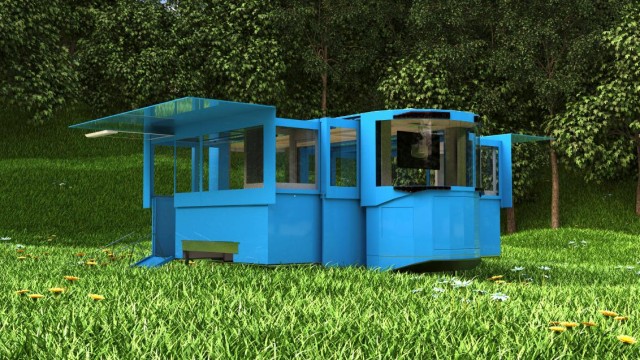










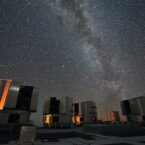


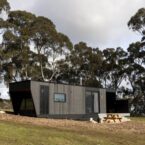
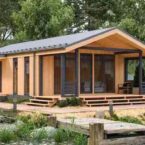

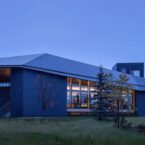

Hi
I’m looking for more information at this time. Is there a phone number to chat with someone?
Thanks
Valerie
Hello Kevin
This is a very innovative idea which needs someone who will make sure that its accepted and be utilised. I feel this will work perfectly here in my country which is South Africa. We can turn this into pop up apartments as South Africa is one of the tourist attraction area as also where I am from is South Africa which Is Durban is most tourist destination, for South Africans who are from other cities. We are short of hotels. We can also use this as temporary accommodation and as disaster management. Please let me know if you are interested to establish this idea here as I am interested.
Nice idea but you lost me with the phrase “unethical housing that draws heavily on energy”. Are you implying that if I refuse to tear down my existing dwelling and spend $100 k on something like this I’m unethical?
Always someone who is negative..”WILL.”
Think outside the box..
Im impressed with these seeds. Very innovative.
Hello Valerie,
Kevin Kelly – Founder / Owner of Prodengin.
Feel free to contact me through the Prodengin website and I will provide you with any information you may require.
I am currently seeking partners that can assist me with establishing Prodengin in the USA and Europe.
Thanks,
Kevin Kelly
I am intersted in purchasing the house as soon as it hit the US market
They are really nice but experience as Hell.
Yes, they are very experience but some shipping containers might be a better alternative 🙂
No, I believe they are flat out saying that the company that built your house did so unethically and you weren’t left eith many options other than the invest in a livingspace that wasnt ethically built. They merely want to gove people the choice. That said, I dont think tearing your housendown is necessary, but you could sell it, buy one of these SEEDs and have $250,000+ or so in your bank account depending on your housing market.
It’s a camper.!!! Try living in this in the northern states. 100k. OK oh but it’s eco. Friendly. So is my camper. I’m sure all the poor are rushing out to buy. Come on call it what it is an over priced expandable pop up camper.
How are they heated/cooled?
Do these come equips with AC and heaters? If so, do the battery Banks provide enough electricity to power them through the night along with everything else?
It is great to see hallmarks of innovation in practise and you have done well to create this concept.
One thing which I would be concerned with is ceiling height. How does hot air escape? In our hot Australian Climate, we are used to high ceilings and options for air circulation. Low ceilings are not ideal – at all. With climate change, the risks in the north of Queensland from storm damage also mean that houses are built to endure tough conditions. Flying coconuts or debris from a storm would smash your homes to bits, and the risk to damage to solar panels, too, is concern.
I noticed also, that the design has ‘options’ for a bathroom and toilet. This would be tricky, as living in such close proximity with the normal quarters may mean the smells would be too close for any comfort.
As a temporary living arrangement, it is a great idea, I think. While people are building solid, storm resistant houses, they could use these for a short 3 to 6 month stay. I agree with some of what Wade has mentioned, I don’t think it is over priced, though, as a stand-alone asset, it could be resold. I think the wheelchair access looks too steep, so a longer ramp might be needed. I didn’t like the blue model, it looked like a horse float in that colour.
If the solar panels could be manoeuvred on angles, to chase the sun, it would then be more adaptable in areas of condensed living (like retirement villages) and people like privacy, so the 360 view thing is not practical. Thick curtains might keep out the heat, though. Thanks and keep up the design.
What an amazing idea. I would happily live offgrid in one of these.
Might be acceptable for a camping trip or as an after disaster temp FEMA dwelling but not a permanent dwelling in the USA. The housing regulations in this nation would NEVER allow for it in at least 3/4ths of the nation. It is not pinned down for one. It would never survive in hurricane country or tornado alley. A snow storm would render it inoperable. It would be acceptable in many 3rd world nations tho that do not contend with our environmental extremes or have our standards of living. And personally there is no way I want a basically see thru dwelling. Not to mention there is no way you can tell me that the building materials used are environmentally sound. Like I stated these are temporary dwellings.